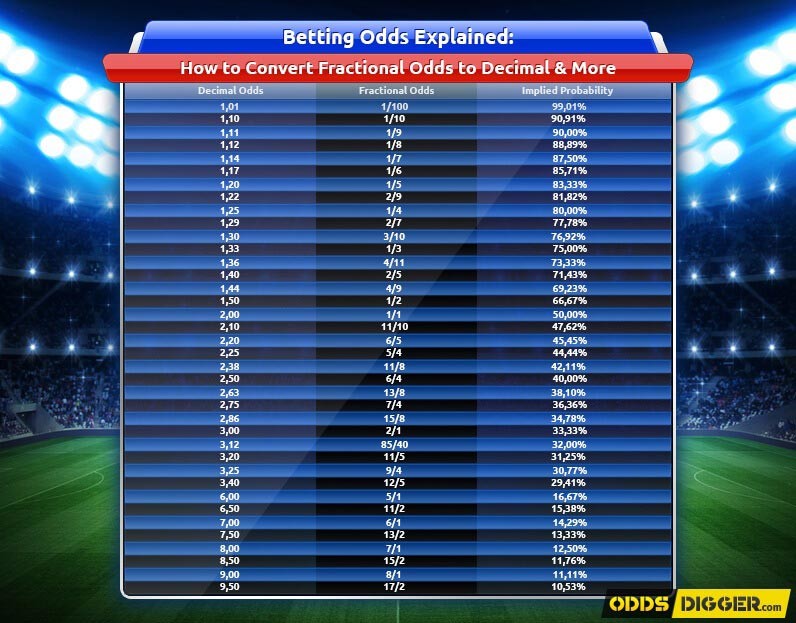Betting odds are an essential part of sports betting 토지노, as they determine how much you can win from a wager and indicate the probability of an event occurring. Whether you’re a beginner or an experienced bettor, understanding different odds formats is crucial for making informed bets. The three most commonly used types of betting odds are Decimal Odds, Fractional Odds, and American Odds. Each format presents the same information but in a different way, and knowing how to read and convert them can give you an advantage when placing bets.
This guide will explain how each type of betting odds works, provide examples, and help you choose the best format for your betting experience.
What Are Betting Odds?
Betting odds serve two primary purposes:
- They indicate the probability of an event happening – Lower odds suggest a higher probability, while higher odds suggest a lower probability.
- They determine the payout of a winning bet – The higher the odds, the larger the potential payout.
Regardless of the odds format, the fundamental principle remains the same: sportsbooks set odds based on various factors, such as team performance, player statistics, and betting market trends.
Decimal Odds Explained
Decimal odds are the most common format used in Europe, Canada, Australia, and many international sportsbooks. They are straightforward and easy to understand, making them ideal for beginners.
How Decimal Odds Work
Decimal odds represent the total payout (including your stake) per unit wagered. The calculation for potential winnings is:
Payout = Stake × Decimal Odds
Example of Decimal Odds
- If a team has odds of 2.50, a $10 bet would return:
$10 × 2.50 = $25 (Total payout, including the stake)
The profit would be $15 ($25 total payout – $10 stake). - If a strong favorite has odds of 1.40, a $10 bet would return:
$10 × 1.40 = $14 (Profit: $4).
Advantages of Decimal Odds
✔ Easy to calculate potential winnings.
✔ Includes the stake in the total payout.
✔ Used by most online sportsbooks globally.
Fractional Odds Explained
Fractional odds (also known as UK odds) are most commonly used in the United Kingdom and Ireland. They are displayed as fractions, such as 5/1 or 10/3, and indicate the potential profit relative to the stake.
How Fractional Odds Work
The first number (numerator) represents the potential profit, while the second number (denominator) represents the amount you need to wager to win that profit. The calculation is:
Profit = (Stake × Numerator) ÷ Denominator
Example of Fractional Odds
- If you bet $10 at 5/1 odds, your winnings would be:
(10 × 5) ÷ 1 = $50 profit + $10 stake = $60 total payout. - If the odds are 10/3, a $10 bet would return:
(10 × 10) ÷ 3 = $33.33 profit + $10 stake = $43.33 total payout.
Advantages of Fractional Odds
✔ Popular in the UK and horse racing markets.
✔ Clearly shows profit without including the stake.
✔ Commonly used in major sports betting events like horse racing and football.
American Odds Explained
American odds (also called moneyline odds) are primarily used in the United States. They are displayed as either positive (+) or negative (-) numbers.
- Positive Odds (+200, +150, etc.) indicate how much profit you would win on a $100 bet.
- Negative Odds (-150, -300, etc.) indicate how much you need to bet to win $100 in profit.
How American Odds Work
For positive odds:
Profit = (Stake × Positive Odds) ÷ 100
For negative odds:
Profit = (Stake × 100) ÷ Negative Odds
Example of American Odds
- If you bet $100 at +200 odds, your profit would be:
(100 × 200) ÷ 100 = $200 profit + $100 stake = $300 total payout. - If you bet $150 at -150 odds, your profit would be:
(150 × 100) ÷ 150 = $100 profit + $150 stake = $250 total payout.
Advantages of American Odds
✔ Common in US sports betting markets like the NFL and NBA.
✔ Positive and negative odds make it easy to see favorites and underdogs.
✔ Widely used in moneyline bets.
Converting Between Odds Formats
Understanding how to convert between odds formats can be useful when comparing sportsbooks. Here’s how to convert:
Decimal to Fractional
- Subtract 1 from the decimal odds.
- Convert the remaining decimal into a fraction.
- Example: 2.50 – 1 = 1.50 = 3/2 (Fractional odds).
Decimal to American
- If decimal odds are greater than 2.00, use:
(+ Odds) = (Decimal – 1) × 100
Example: 2.50 → (2.50 – 1) × 100 = +150 (American odds). - If decimal odds are less than 2.00, use:
(- Odds) = -100 ÷ (Decimal – 1)
Example: 1.50 → -100 ÷ (1.50 – 1) = -200 (American odds).
Fractional to Decimal
- Divide the numerator by the denominator and add 1.
- Example: 5/1 → (5 ÷ 1) + 1 = 6.00 (Decimal odds).
American to Decimal
- If positive, use:
(American ÷ 100) + 1
Example: +200 → (200 ÷ 100) + 1 = 3.00 (Decimal odds). - If negative, use:
(100 ÷ |American|) + 1
Example: -150 → (100 ÷ 150) + 1 = 1.67 (Decimal odds).
Which Odds Format Should You Use?
The best odds format depends on where you are betting and your personal preference:
✔ Use Decimal Odds if you prefer simple calculations and an international sportsbook.
✔ Use Fractional Odds if you are betting in the UK or on horse racing.
✔ Use American Odds if you are betting on US-based sports.
Conclusion
Understanding betting odds is crucial for making smart wagers and maximizing your returns. Decimal, fractional, and American odds all convey the same information but in different ways. By learning how to read and convert between them, you can confidently place bets and find the best odds available. Whether you prefer the simplicity of decimal odds, the traditional style of fractional odds, or the strategic display of American odds, mastering these formats will enhance your sports betting experience. Always compare odds across sportsbooks, and bet responsibly for the best results.




